6 common Layouts For Container Dormitories
Container houses are becoming more and more popular as a convenient and affordable alternative to traditional buildings. They can be easily transported, installed, and customized. Container houses have a wide range of uses, such as container dormitories, container offices, container warehouses, container hotels, container coffee shops, and more. They can also be designed according to different layouts and styles, depending on the purpose and preference of the users.
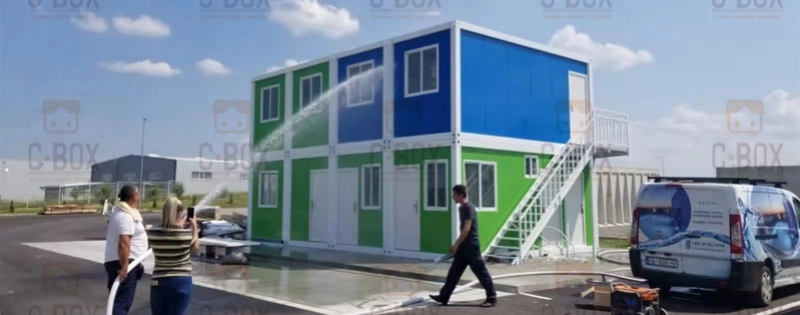
In this blog, we will focus on one of the most common uses of container houses——container dormitories.
Dormitories are living spaces for workers, students, travelers, or anyone who needs a temporary or permanent accommodation. Dormitories can vary in size, shape, comfort, and quality, depending on the budget and needs of the users. Container houses can provide a flexible and cost-effective solution for dormitory needs, as they can offer various benefits, such as:
• Durability: Container houses are made from galvanized steel, which is strong and resistant to corrosion, fire, and pests. They can withstand harsh weather conditions and natural disasters, such as earthquakes and hurricanes.
• Mobility: Container houses can be easily transported and relocated, as they are designed to fit on standard trucks and trailers. They can also be disassembled and reassembled, making them ideal for temporary or remote locations.
• Customization: Container houses can be customized to fit the specific requirements and preferences of the users, such as size, design, layout, and equipment. They can also be combined into different configurations and purposes, such as single or multi-story, with or without corridors, and with various amenities and facilities.
• Eco-friendliness: Container houses can reduce the environmental impact of construction, as they use recycled materials and reduce waste. They can also be equipped with energy-efficient systems, such as solar panels, LED lights, and insulation, to save energy and water.
However, not all container houses are the same, and choosing the best one for your dormitory needs can be challenging. There are many factors to consider, such as the location, the number of people, the budget, the quality, and the style. To help you make the best decision, we will introduce to you six types of container houses when used as dormitories, and their advantages and disadvantages.
|
1. Single-layer container dormitories
Single-layer container dormitories are suitable for places where workers are not skilled in installation knowledge and have large land, because this kind of container house only requires conventional assembly, and there is no need for additional customization. They are the simplest and cheapest type of container dormitories, as they consist of one or more containers placed side by side or end to end. They can provide basic living spaces for workers, such as beds, closets, desks, and chairs. They can also have shared facilities, such as bathrooms, kitchens, and laundry rooms, depending on the number and size of the containers.
|
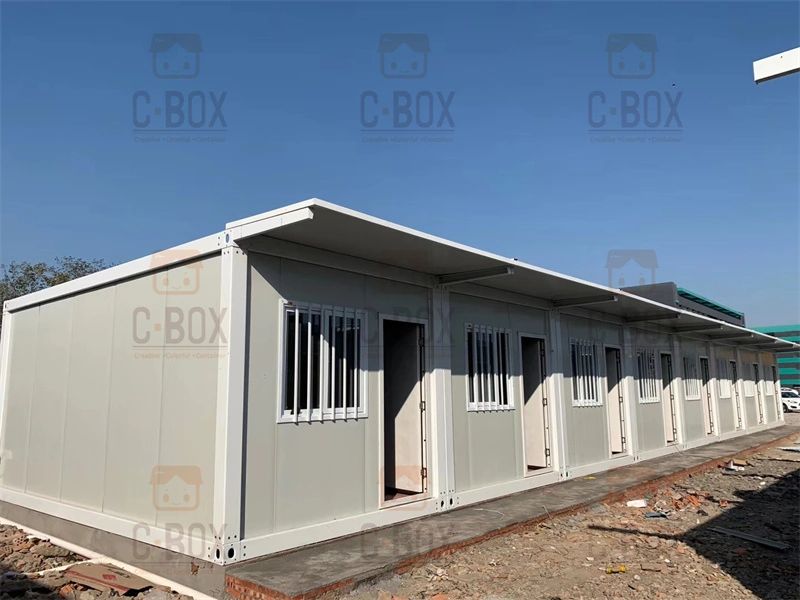
|
|
2. Double- or three-story container dormitories with corridors
Double- or three-story container dormitories with corridors require workers to have professional installation knowledge because they have stair corridors and are suitable for places with limited land. They are more complex and expensive than single-layer container dormitories, as they consist of multiple containers stacked on top of each other and connected by external or internal corridors. They can provide more spacious and comfortable living spaces for workers, as they have more beds, closets, desks, and chairs. They can also have more facilities, such as bathrooms, kitchens, laundry rooms, and balconies, depending on the number and size of the containers.
|
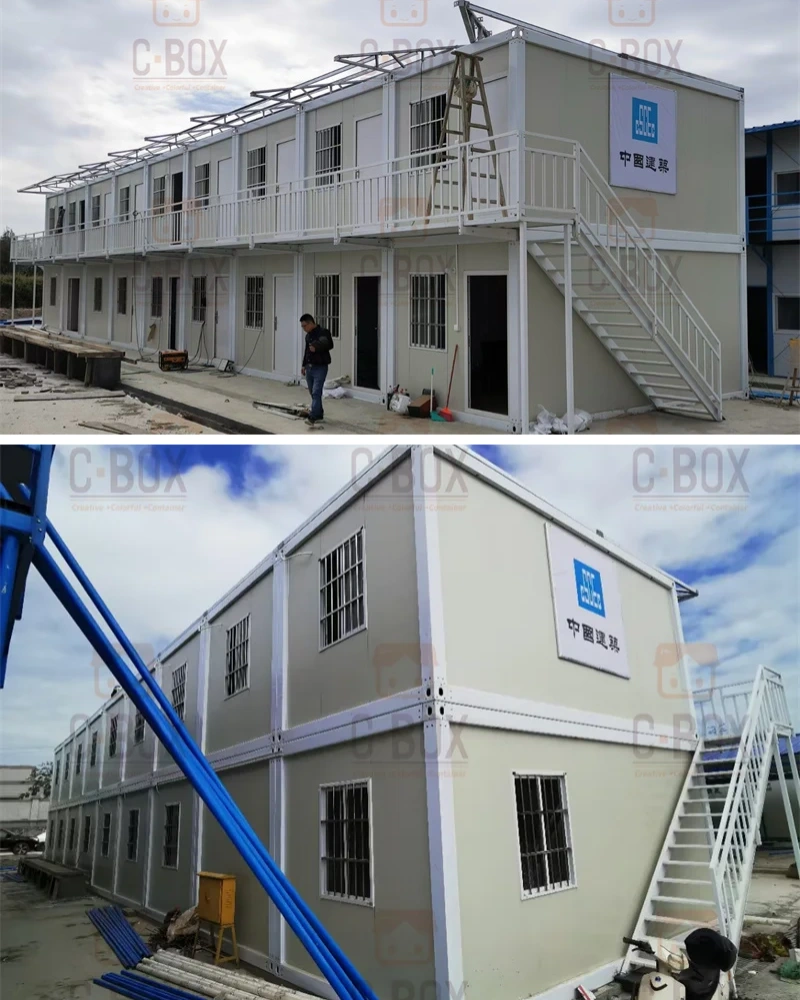
|
The advantages of double- or three-story container dormitories with corridors are:
• More aesthetics and functionality: Double- or three-story container dormitories with corridors can be more attractive and interesting, as they have more customization and decoration. They can also have more functionality and versatility, as they have more flexible and diverse layouts and purposes.
The disadvantages of double- or three-story container dormitories with corridors are:
• Harder to install and relocate: Double- or three-story container dormitories with corridors can be harder to assemble and disassemble, as they require more tools and connections. They can also be harder to transport and relocate, as they are heavier and bulkier.
• Higher cost: Double- or three-story container dormitories with corridors are more expensive than single-layer container dormitories, as they have higher material and labor costs.
|
3. Multi-layer container dormitories with aisle containers
Another type of multi-layer container dormitory comes with aisle containers. The appearance and structure of aisle containers and ordinary aisles will be different. You can choose and match according to your budget. They are similar to double- or three-story container dormitories with corridors, but they use additional containers that serve as aisles or hallways between the living containers. They can provide more convenient and accessible living spaces for workers, and can also have more facilities, such as bathrooms, kitchens, laundry rooms, and balconies, depending on the number and size of the containers.
|
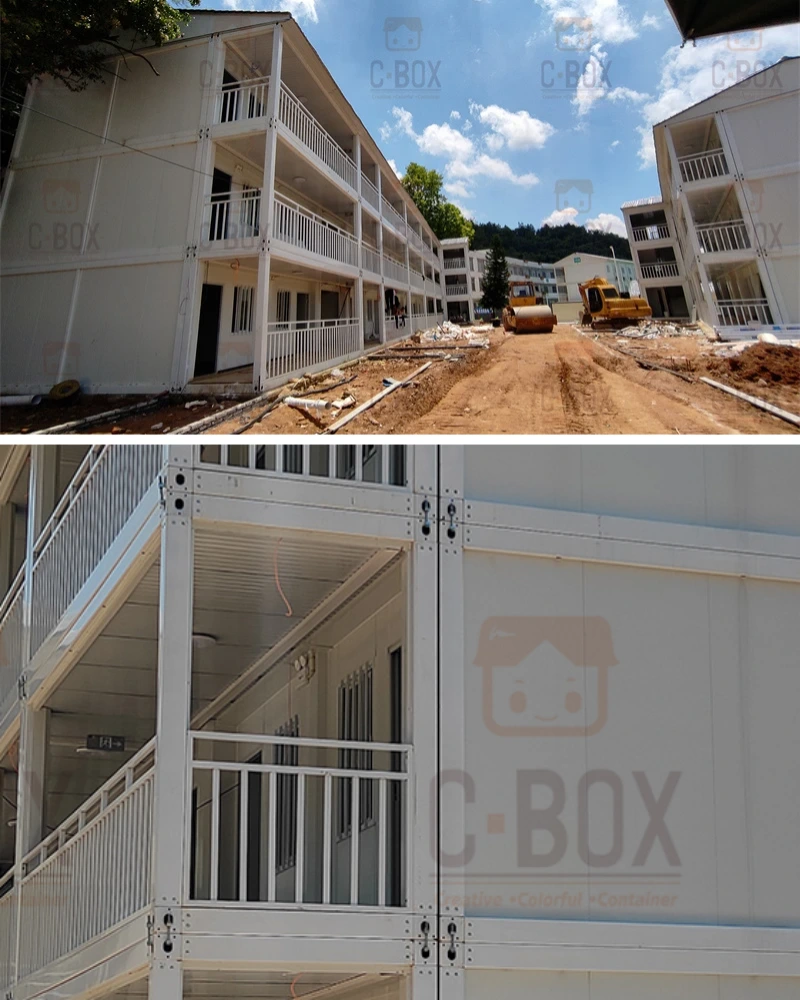
|
The above are all standard layouts, usually shipped as empty house layouts. The front wall is equipped with a door and a window, and the back wall is equipped with a window. They are suitable for construction sites, mines, and other places where many workers live. The internal layout is usually three bunk beds or a bunk bed with a bathroom, and kitchen.
Below we will share some dormitory layouts with non-standard layouts, suitable for emergency housing, youth hostels, families of three, or projects with a small number of workers.
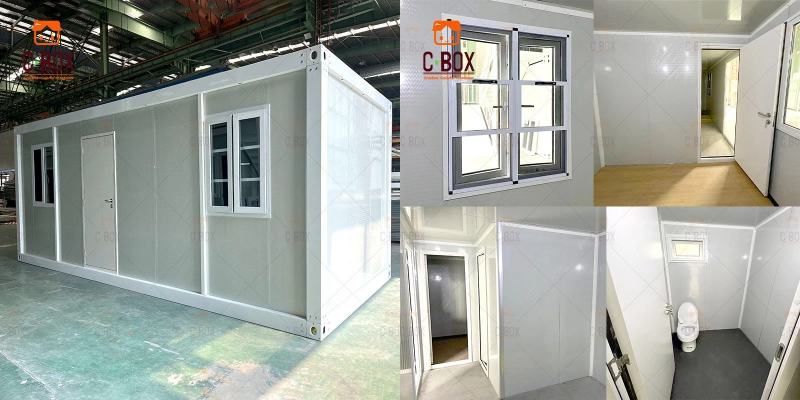
|
4. Non-standard size container dormitories
Non-standard size container dormitories are suitable for places where workers have special needs or preferences, such as emergency housing, youth hostels, or families of three. They are different from standard-size container dormitories, as they have customized dimensions, such as 3*7 meters or 4*8 meters.
|
The advantages of non-standard size container dormitories are:
• More personalization and comfort: Non-standard size container dormitories can be more personalized and comfortable, as they have more bedrooms, living rooms, bathrooms, and kitchens. They can also have more amenities and facilities, such as furniture, appliances, and decorations, depending on the budget and taste of the users.
The disadvantages of non-standard size container dormitories are:
• Harder to find and order: Non-standard-size container dormitories can be harder to find and order, as they are less common and available than standard-size container dormitories. They can also have longer delivery and installation times, as they require more customization and modification.
The above two sizes are often exported by our CBOX, especially the 3*7 meter size is the most popular. Our CBOX exported a total of 6,000 sets in 2023 and was widely praised by customers.
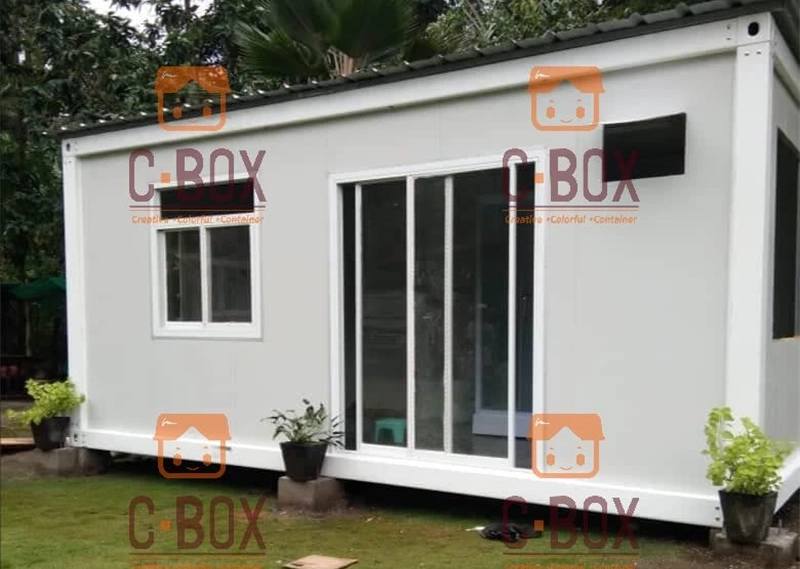
|
5. Glass sliding doors with customized windows container dormitories
Glass sliding doors are different from ordinary container dormitories, as they have large glass sliding doors and windows that cover most of the walls which can provide more open and bright living spaces for workers.
|
The advantages of glass sliding doors with customized windows container dormitories are:
• More openness and brightness: Glass sliding doors with designed windows container dormitories can be more open and bright, as they allow natural light and ventilation to enter the container, as well as offer a clear view of the surroundings. They can also create a sense of openness and spaciousness, which can make the container more comfortable and inviting.
• More versatility and attractiveness: Glass sliding doors with designed windows container dormitories can be more versatile and attractive, as they can be used for various purposes and scenarios, such as flower rooms, single dormitories, outdoor studios, and shops. They can also have more styles and designs, such as modern, minimalist, or elegant.
The disadvantages of glass sliding doors with customized windows container dormitories are:
• Less privacy and security: Glass sliding doors with customized windows container dormitories can be less private and secure, as they have less wall and door coverage and more visibility. They can also be more vulnerable to breakage and damage, as they have more glass and less steel.
• Higher cost and maintenance: Glass sliding doors with designed windows container dormitories can be more expensive and require more maintenance than ordinary container dormitories, as they have more glass and less steel. They can also incur higher utility costs, as they can have more heat loss and gain, and more glare and reflection.
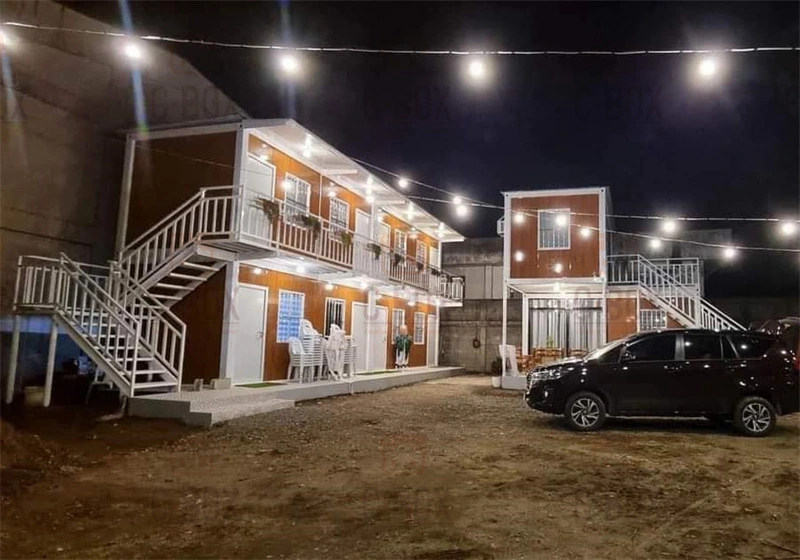
|
6. Randomly placed container dormitories with staircases and terraces
Randomly placed container dormitories with staircases and terraces are suitable for places where workers want to have a unique and eye-catching design, such as self-built residences, boutique hotels, or container house businesses. They are different from orderly-placed container dormitories, as they have containers that are placed at different angles and heights, creating a variety of shapes and forms, which has more potential and versatility.
|
The advantages of randomly placed container dormitories with staircases and terraces are:
• More creativity and fun: Randomly placed container dormitories with staircases and terraces can be more creative and fun, as they have more bedrooms, living rooms, bathrooms, kitchens, and balconies. They can also have more staircases and terraces that connect the containers and provide outdoor areas for relaxation and entertainment.
The disadvantages of randomly placed container dormitories with staircases and terraces are:
• Harder to install and relocate: Randomly placed container dormitories with staircases and terraces can be harder to assemble and disassemble, as they require more creativity and modification. They can also be harder to transport and relocate, as they are heavier and bulkier.
• Higher cost and risk: Randomly placed container dormitories with staircases and terraces can be more expensive and risky than orderly placed container dormitories, as they require more material and labor costs. They can also have more structural and safety issues, such as stability, balance, and load-bearing.
These are the six types of container houses for dormitory use that we have introduced to you. We hope that this article has given you some useful information and inspiration for your container house project. If you are interested in buying or building a container house, you can contact us and we will provide you with the best quality and service.
We are a professional and experienced container house supplier, and we can offer you various types of container houses, such as single-layer, double- or three-story, with or without corridors, with or without aisle boxes, standard or non-standard size, with or without glass sliding doors and windows, and orderly or randomly placed. We can also customize your container house according to your needs and preferences, such as size, design, layout, and equipment. We can deliver and install your container house in a fast and efficient way, and we can also provide you with after-sales service and support.
Contact us today and let us help you with your container house project!!!







